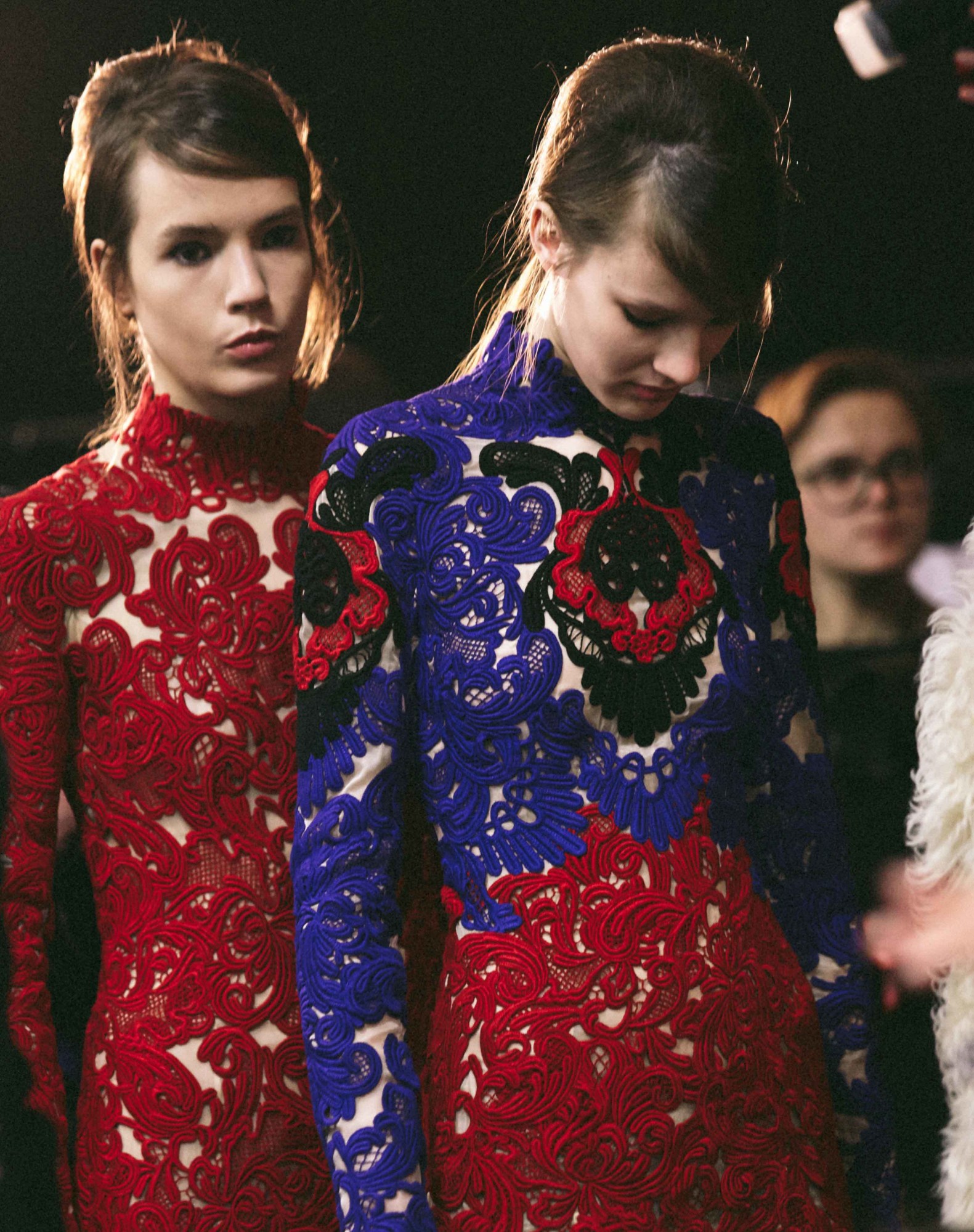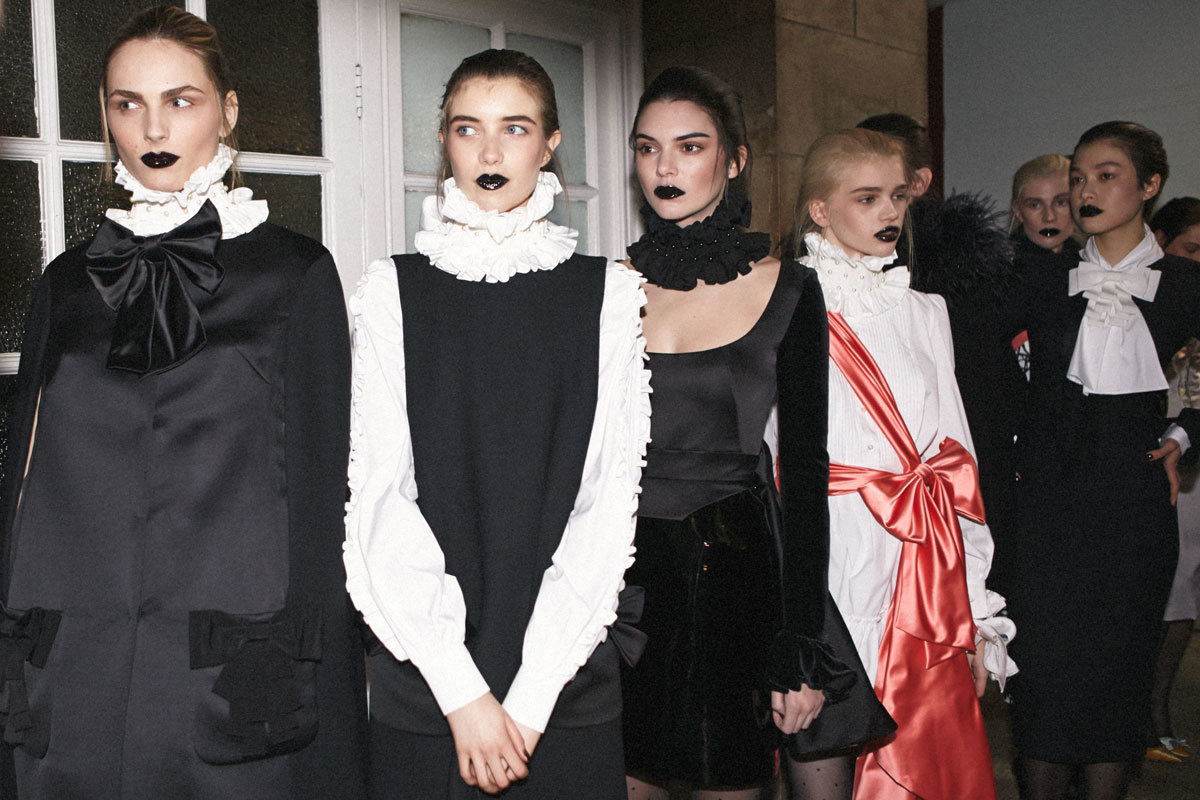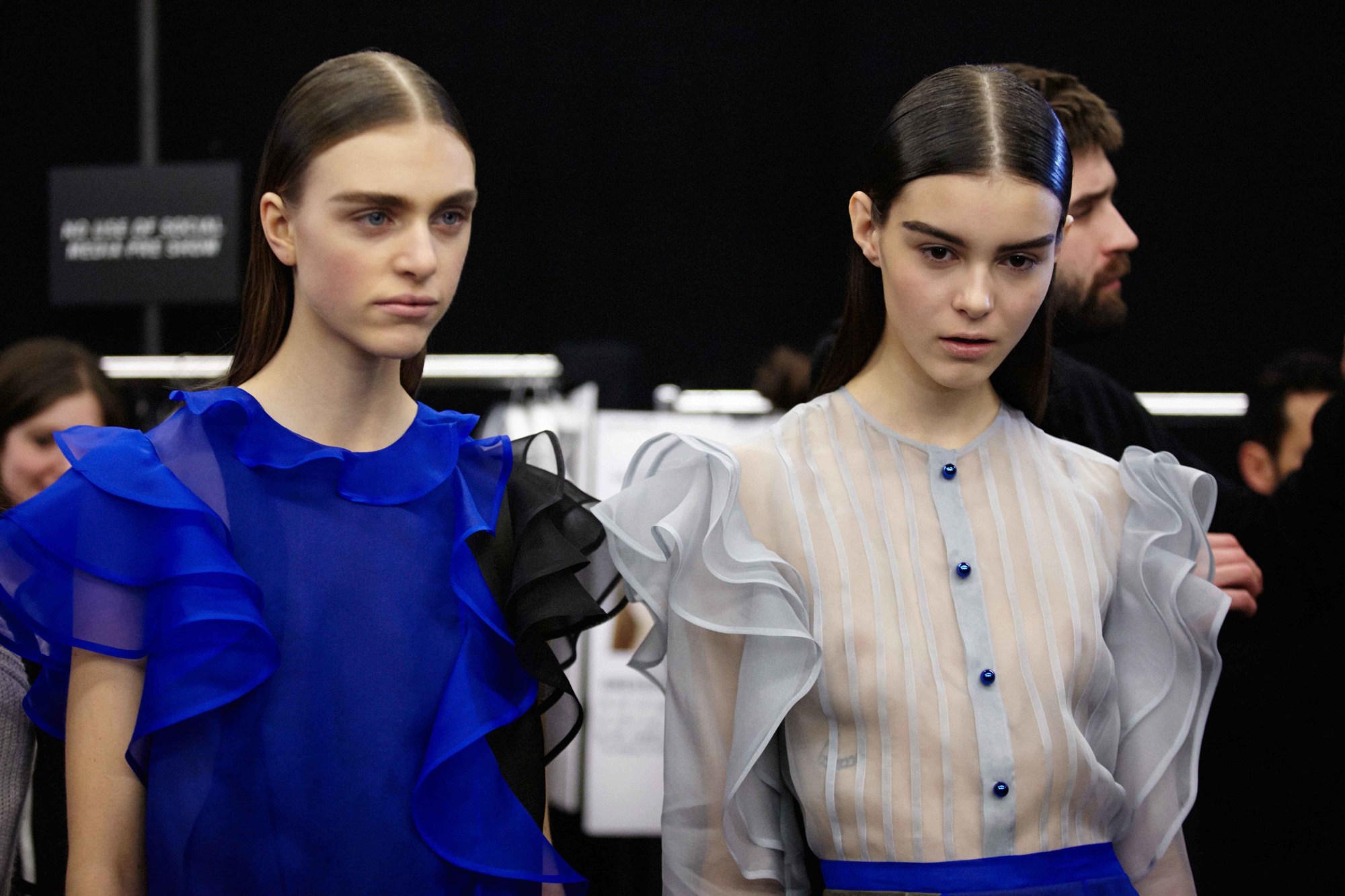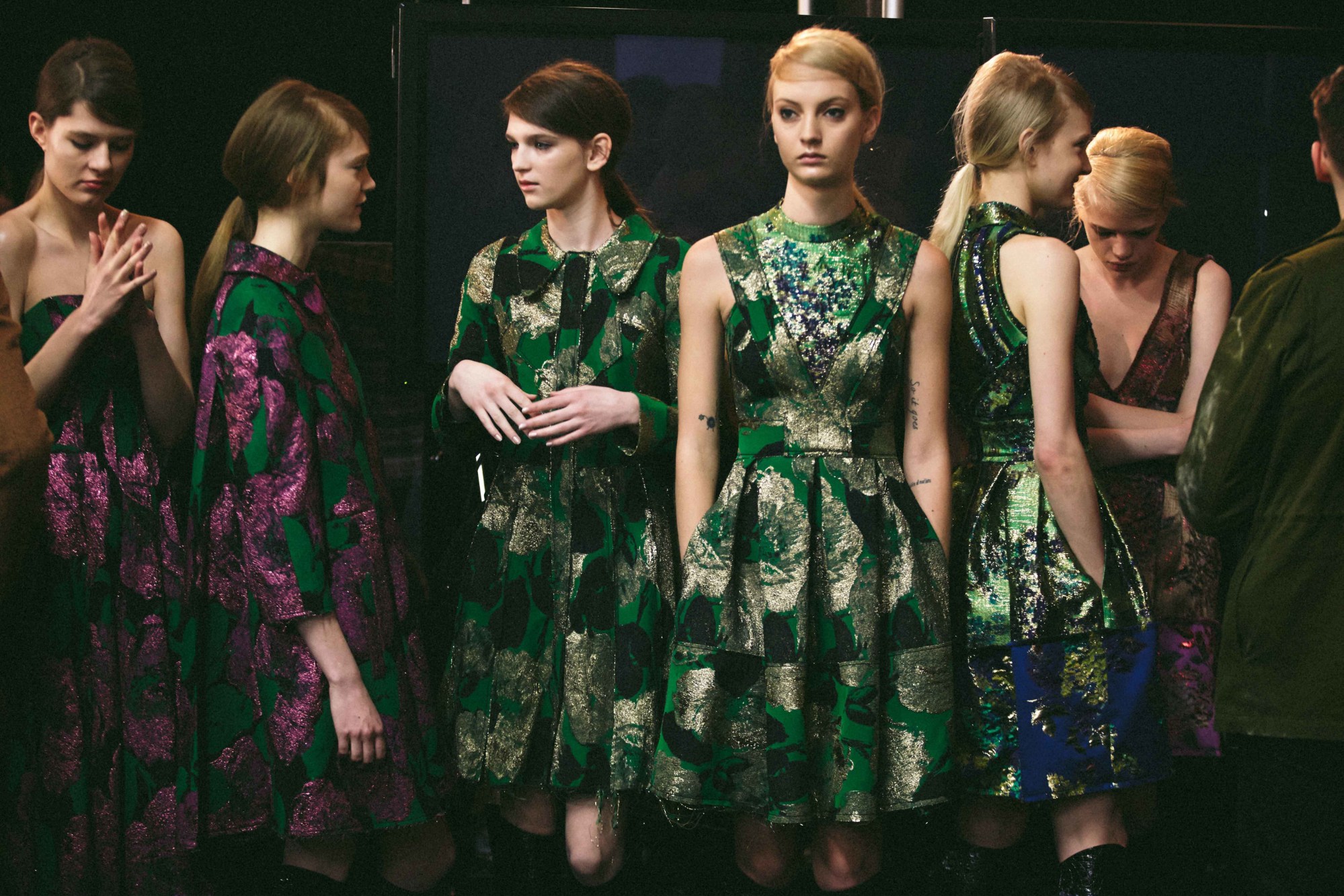Fashion week attendees tend to miss the Oscars. We’re all on UK time, collapsed in bed after another day of the intense, non-stop schedules of the London shows. But what fashion week deprived us of that Sunday night, designers made up for in theatricality on Monday morning—and it didn’t stop. Erdem Moralioglu, a fervent Frieze-goer, had taken inspiration from Robin Brown’s installation, The Collector, and the idea of creating a character through its surroundings. The concept called for an elaborate set, so Erdem had to build one. It took his always-spectacular runways at the Old Selfridges Hotel to a different level, because the designer literally had to furnish a house to establish his character.

Knowing Erdem’s love of Hitchcock, the ‘room’ could only ever have been the somewhat worn-down 50s fusion of modern and Old World, with those muted pastels and a sense of eeriness about it all, the wallpaper slightly soiled and empty sherry glasses left around. He listed Kim Novak, Claudia Cardinale and Romy Schneider as muses, but, he said, “I wouldn’t say the collection was about a specific actor. It was the idea of creating a character through its environment as much as through the clothes.” It was a you-are-where-you-live approach that didn’t just add the theatricality you appreciate as a show-goer, but commented on fashion’s role in a world where your wardrobe is essentially controlled by your surroundings.
It’s not necessarily something we want to admit in fashion, what with our keen sense of individuality and anti-establishment spirit, but as nice as the thought is, the reality is the world leaves you little choice but to dress to fit in, in one way or another. Walking down the street in a boldly coloured, geometrically patterned Roksanda Ilincic piece very much goes against that notion, which is why the designer had to create the London season’s perhaps most cinematic set around her autumnal 70s collection, inspired by Fassbinder’s The Bitter Tears of Petra von Kant: a huge winding runway on poles, build inside an old W1 gym, and painted in purple swirls.

It didn’t just border on stage design, it was stage design. The feeling was echoed at Peter Pilotto, who matched the board game motifs of their collection in a cubic design on the runway, and at Thomas Tait, who blacked out a room and in turn lit up the parts of the floor the models walked on, Billie Jean style, until an entire graphic runway of light had taken shape in his big Baker Street venue. (Kanye West on the front row seemed to approve.) Fashion shows, of course, have been theatrical almost since their early beginnings, but for London’s newish generation of designers, the purpose of elaborate sets isn’t just to build a world around the collection, but to turn fashion into performance.
After all, the way we dress is a performance in itself, so why would fashion shows be the dry, robotic experiences, which is often the case? It was an issue addressed by Giles Deacon, who put on one the best shows – and collections – of his career at The College on Southampton Row. A brilliant cast of models including Andreja Pejic, Kendall Jenner and Erin O’Connor in ruffled Renaissance collars and part-Gothic, part-Elizabethan dresses danced, twirled and posed their way through the two rooms to the genuine applauses of the audience. It was a thrilling 15 minutes that didn’t come with a gigantic, expensive set but put some much-needed personality and self-expression of the models into the show experience.

Christopher Kane, who dedicated his show to his mother Christine, who died on the eve of his friend and teacher Louise Wilson’s memorial last Friday, went through with his show at Tate Modern. He was the only designer of the third day of the London shows, who didn’t work with an elaborate set or performance elements in his collection, inspired by the life drawing lessons his studio had been taken. But as far as self-expression goes, Kane’s male and female nude prints had the same message of character, personality and stripped down honesty as his London designer colleagues. It was theatricality inverted.
Catch up with the rest of our autumn/winter 15 coverage here.
Credits
Text Anders Christian Madsen
Photography Piczo
